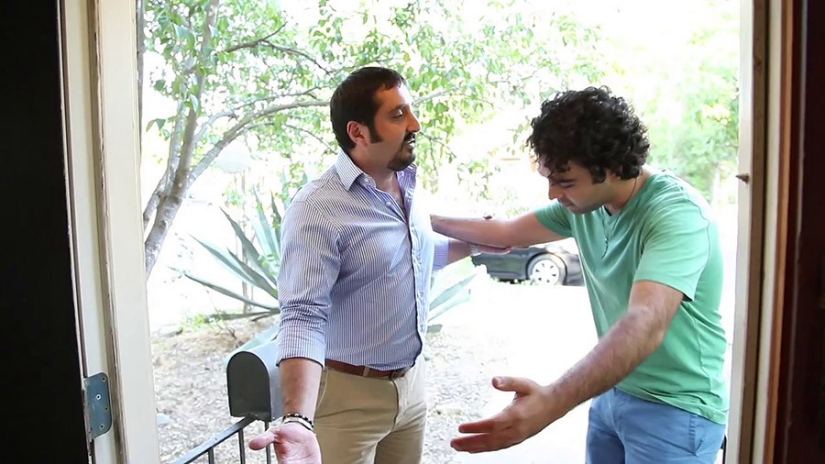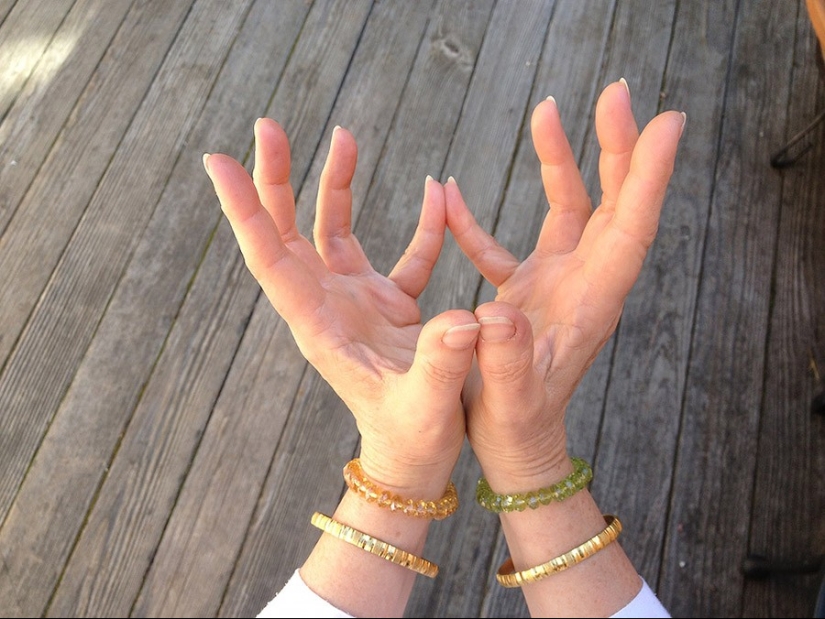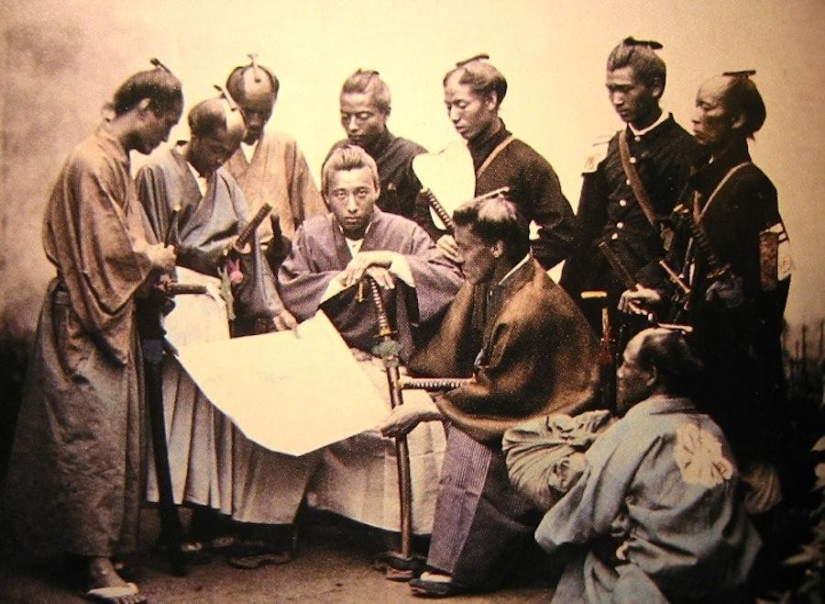8 unique customs of different cultures
Categories: Nations
By Pictolic https://pictolic.com/article/8-unique-customs-of-different-cultures1.htmlThe world is filled with unique and vibrant cultures. Different cultures have very different customs and traditions. Some of these customs can be delightful, and some can be shocking.

Taarof is an Iranian practice of demonstrating gestures of respect and reverence. For example, in some institutions it is considered normal when the seller refuses to accept payment from a buyer of a higher social status. The buyer, in turn, understands that it will be right to insist on payment. The seller may refuse to accept the fee several times before allowing the customer to pay for the purchase.

These rules can be very confusing, especially for unhappy foreign buyers. Taarof can also extend to social invitations. It is clear that in the Iranian culture, an invitation to your home, no matter what the occasion, is a simple formality. And if you accept such an invitation, it can put the owner of the house (who, perhaps, did not want to see you at all) in an extremely awkward position.
Pagmamano is a special Filipino gesture symbolizing respect for elders. It looks like a bow, but during the bow, the bowing person presses the elder's hand to his forehead. This gesture is common not only in the Philippines, but also in some parts of Indonesia and Malaysia. It is said that the gesture was borrowed from the Chinese, and it happened several centuries ago, when Filipinos were just getting used to Chinese travelers and merchants.

With this gesture, children on family holidays often ask for blessings from their elders. This custom of respectfully addressing elders is usually accompanied by the use of certain words. For example, the expression "Ano yun?" is a common phrase used to address an equal. But the expression "Ano po yun?" is intended to demonstrate respect for the person to whom the appeal is addressed. If an older person or a person with a higher social status asks a question, he is answered with "oro" in agreement, and not "oo" (the usual Filipino "yes").
Another unique aspect of Philippine culture is the practice called "bayanihan". This is the name of the procedure for moving a residential building to a new location. It is really an enchanting sight when the villagers gather in order to literally take, lift the structure, and drag it to a certain distance. Sometimes this is done so that the house does not fall under a landslide or flood. However, sometimes this is done simply to please good neighbors.

Bayanihan is practiced mainly in rural areas, as houses there are usually made of light materials such as bamboo and palm. It is quite difficult to do this in the city because of various obstacles in the form of basketball and playgrounds. And it is almost impossible to raise a city house.
Mudras are certain gestures unique to Hinduism and Buddhist cultures, and they are common primarily in India. More than 500 different feelings can be expressed by the way a person moves his hands or fingers. It is believed that these movements enable a person to control the flow of "prana", or vital energy, and concentrate their attention on some specific goal.

Mudras can be noticed by looking at Buddhist statues, paintings, or by looking at a yogi during meditation. Mudra "jnana" is when the tips of the thumb and index finger are connected, while the other fingers remain straight. It promotes mental clarity and calmness, which has made it the most popular wisdom used during meditation.
Mudra "abhaya" (a simple lifting of the right hand up, the palm is open, the fingers are straightened) has an almost universal meaning that is found in other cultures and religions. This mudra is connected with the heart chakra, and is designed to demonstrate openness and honesty of intentions. Mudra "agni" (the tips of the thumb and middle finger are connected, the rest of the fingers are straight) symbolizes fire, and helps to improve digestion.
In different parts of the world, being late is considered a serious offense, but this rule does not apply to South America. For example, in Chile, if the host said that lunch will be served at 20:00, guests begin to gather by 20:15, or even by 20:30. If you arrive on time or a little earlier, the host may be unprepared, and the guest will be considered very impatient, plus the host may decide that he came only to eat.

In Ecuador, being 15-20 minutes late is considered "arriving on time", and Brazilians generally consider time to be very "flexible" and therefore come when they want. Even some US states have adopted these traditions, since a significant part of the population there are immigrants from the above countries, and they brought their traditions with them. In Miami, for example, it is customary to serve dinner quite late, and the guests there are less punctual than in other parts of the country.
6. Baby teeth and the "tooth fairy"
There are several versions of fairy tales about the "tooth fairy". For example, in Denmark, the "tooth fairy" is called Tann Fenn. In many cultures, this mythical character is actually a mouse.
In France, the "fairy" is called "La Petite Souris", in Spain — "Ratoncito Perez", in Colombia — "El Raton Miguelito". In Greece and Mauritania, a child does not just leave a baby tooth under the pillow, he throws it as hard as he can, and certainly tries to throw it on the roof of the house. In Greece, the safety of a baby tooth provides strong molars and good luck. And in Mauritania, if there is a rooster in the household, screaming in the morning, then it is he who is charged with storing a baby tooth.

Parents tell Jamaican children scary stories about a calf that will come and kill them if they don't put their baby tooth in a jar and shake this jar. It is believed that the resulting noise is able to drive away the calf. And in Malaysia, children get a more "spiritual" idea of fallen baby teeth. They bury their teeth in the ground, because it is believed that every part of the body must return to the ground.
In Turkey, fallen baby teeth are used to make children the ones their parents want to see. For example, if parents want their child to become a doctor, then a baby tooth can be buried near the hospital.
The moral code of samurai, the code of warriors of Japan, emphasizes loyalty, integrity and strength. Some scientists and analysts even recommend the introduction of this code into the business world, especially if you take into account the mass of problems facing corporations today. To do business inspired by the moral code of samurai means to work honestly and very effectively, in accordance with the interests of your boss and society.

But seppuku, or ritual suicide, adopted by samurai, has such a positive and unambiguous reputation. This practice was especially strongly criticized during the Second World War, when thousands of Japanese soldiers decided to continue samurai traditions, and preferred suicide to captivity. Similar things happen even today. Among the most famous cases are the suicide of Yukio Mishima, which he committed in 1970 in protest against Japan's military policy, and the suicide of Masaharu Nonaka, which he committed in 1999 after he was fired.
In Korea, if a person feels unbearable guilt and shame in connection with any tragedy, he sometimes also sees no other way out but to take his own life. When the Sewol ferry sank on April 16, 2014 due to the captain's mistake and hundreds of students died, the deputy head of the company committed suicide because he could not live on with a huge sense of guilt.
Haka is a tradition of the Maori people of New Zealand. This is a special dance that includes a guttural howl, loud singing, stomping, grunting, clucking with tongue and a ferocious facial expression. All this is done in order to strike terror into the enemy's heart.

Today, the haku is performed by New Zealand's national rugby sports teams. For example, the national team "All Blacks" performs a haka before every game. And during the FIBA tournament in 2014, the national basketball team "Tall Blacks" also performed a haka, which led to considerable confusion of their American rivals.
However, haka is not just a martial dance. Haka can include poems, it can tell the history of the tribe, ancient knowledge can be transmitted with its help, and it can also be used to demonstrate respect or as a greeting. A striking example of this is the case that occurred after the shooting of the Lord of the Rings trilogy, which, as you know, was filmed in New Zealand and many local actors participated in the filming. Viggo Mortensen performed many dangerous stunts himself during the filming, for which he was respected by all local actors. Therefore, on the last day of filming, the New Zealand actors performed a haka for him as a sign of respect.
Recent articles

Almost everyone who sees the Xiko Crater for the first time thinks that it is an ancient man-made structure. How could it be ...

With the advent of gadgets in our lives, a lot has changed, including the load on the body. After all, sitting in front of a ...

What entrepreneurs do not do to attract tourists. Hotels made of ice and snow, located under water and on the tops of trees, are no ...